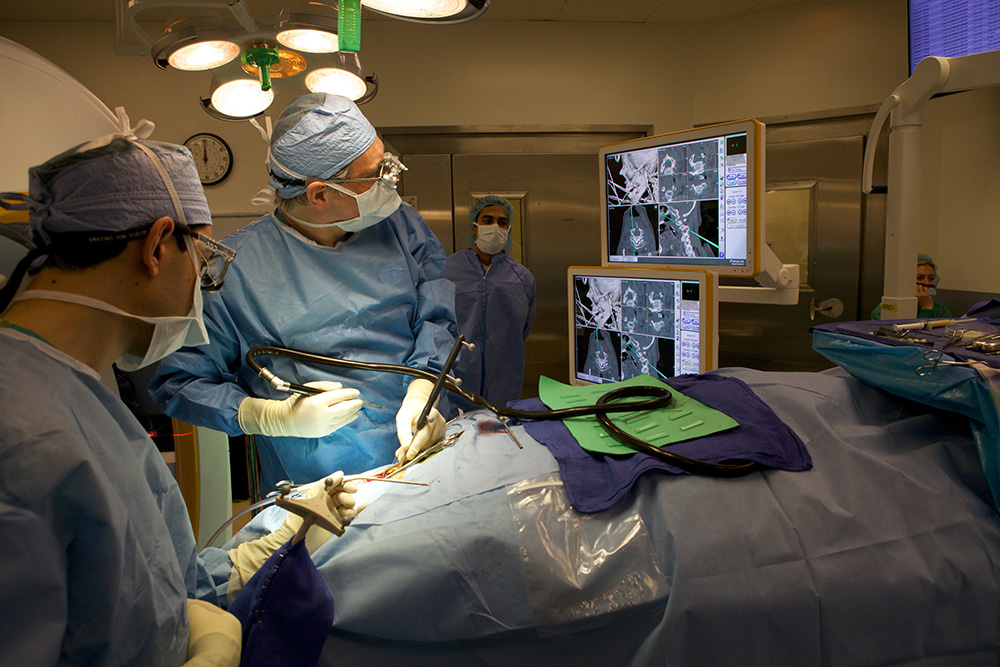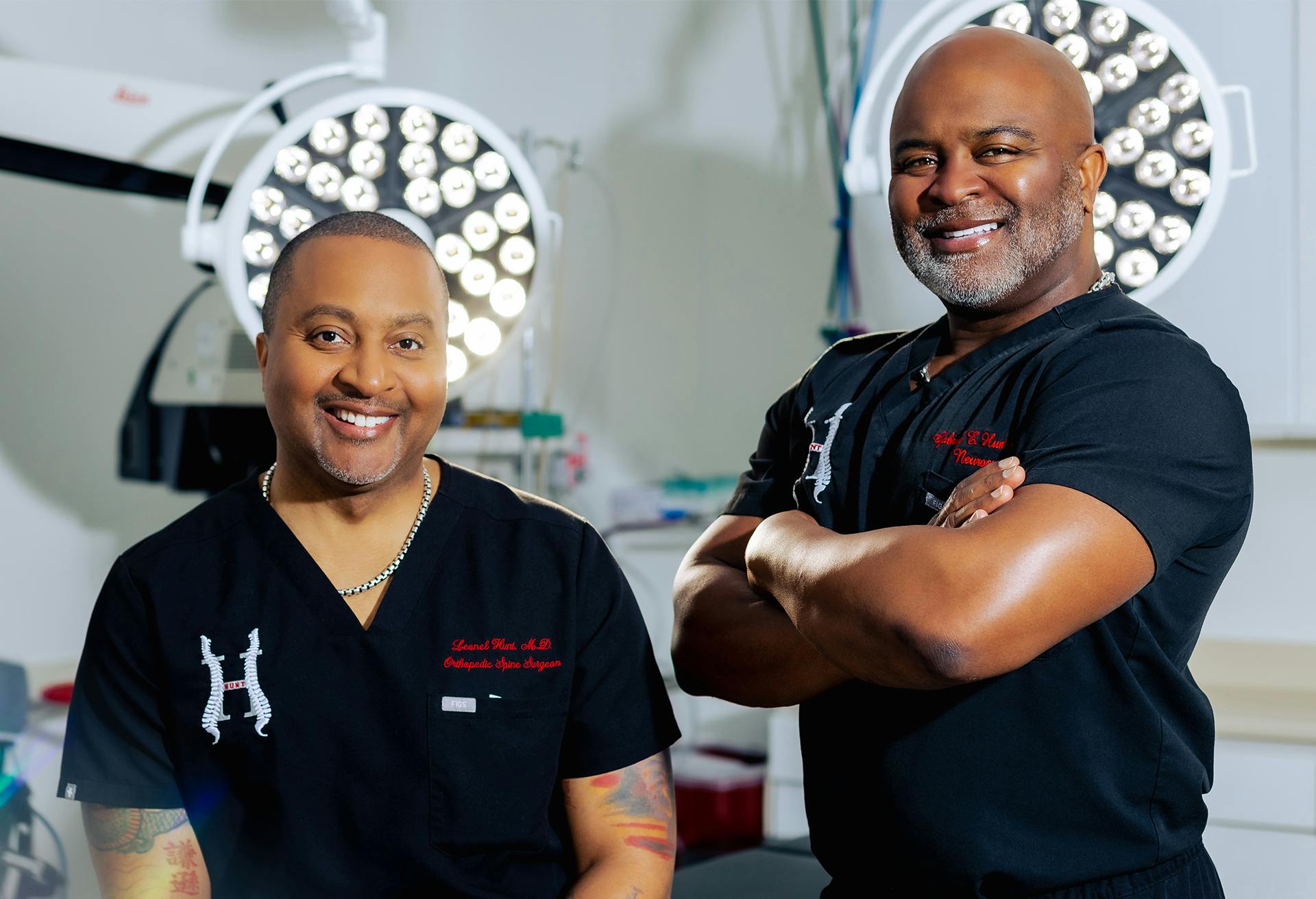Exactly how to Get ready for Visits to the Best Spine Surgeons in St Louis MO
Exactly how to Get ready for Visits to the Best Spine Surgeons in St Louis MO
Blog Article
A Review of Spine Problems That Commonly Cause Surgical Therapies
Spinal column conditions such as herniated discs, back constriction, and degenerative disc condition often require surgical interventions when conservative therapies stop working to reduce persistent signs and symptoms. Understanding the nuances of each condition and the matching medical options, such as discectomy or back blend, is essential for reliable administration.
Herniated Discs
Although several people with herniated discs may locate relief via traditional treatments, surgery ends up being a needed factor to consider when symptoms linger or intensify - best spine surgeons in st louis mo. A herniated disc happens when the soft internal gel of a spinal disc sticks out with its outer layer, possibly compressing close-by nerves and leading to pain, numbness, or weakness in the extremities
Traditional administration usually includes physical therapy, discomfort medications, and corticosteroid injections, which aim to lower swelling and boost function. In instances where these methods fail to ease devastating signs, medical options may be checked out.
One of the most common medical treatment for herniated discs is a discectomy, which includes the removal of the herniated section of the disc to ease pressure on the impacted nerve origin. In a lot more extreme cases, spinal fusion may be essential to stabilize the impacted vertebrae.
Patients are suggested to discuss the potential risks and benefits of surgical treatment with their doctor to make a notified choice. Eventually, the objective of any kind of medical intervention is to recover function, alleviate pain, and improve total lifestyle for individuals experiencing herniated discs.
Back Constriction
Spine stenosis occurs when the areas within the spinal column narrow, leading to increased pressure on the back cable and nerves. This problem can establish in various areas of the back, consisting of the cervical and lumbar locations, commonly as a result of age-related adjustments, such as degenerative disc condition, arthritis, or enlarging of tendons.
People with spine stenosis may present with signs and symptoms that consist of pain, pins and needles, prickling, or weakness, largely in the arms or legs. These signs can be worsened by activities that involve standing or strolling, typically leading individuals to look for alleviation with conventional treatments like physical treatment, medications, or epidural steroid injections.
Nonetheless, when these non-surgical interventions stop working to give sufficient alleviation, surgical alternatives might be thought about. Typical surgical treatments for back constriction include laminectomy, which includes the elimination of part of the vertebra to ease stress, and spinal fusion, which maintains the affected area.
Spondylolisthesis
Spondylolisthesis happens when one vertebra slides onward over another, causing imbalance of the spine. This condition can result from various elements, including hereditary flaws, injury, or degenerative changes in the spinal column. It is most frequently observed in the back area, particularly at the L4-L5 and L5-S1 levels.

When non-surgical methods fail to eliminate signs and symptoms or when significant nerve compression is existing, medical treatment may be required. Surgical choices can consist of back combination or decompression treatments, aimed at bring back placement and relieving neurological symptoms.
Degenerative Disc Condition

People with DDD often experience pain that may radiate to the legs or arms, depending on the affected area of the spinal column. The condition can be identified through a mix of medical analysis, imaging researches, and person history. Treatment alternatives generally start with conservative procedures, including physical treatment, discomfort monitoring, and lifestyle alterations. Nonetheless, when these techniques stop working to offer appropriate relief, medical interventions may be thought about.
Surgical options for DDD may consist of spinal combination or artificial disc replacement, focused on stabilizing the affected sector and minimizing pain (best spine surgeons in st louis mo). Inevitably, the option of therapy is individualized, thinking about the intensity of the problem, individual health and wellness, and way of living aspects
Spine Tumors

What aspects contribute to the advancement of growths within the spine, and how do they manifest in patients? Spinal lumps can read review occur from different aspects, consisting of genetic tendency, ecological impacts, and pre-existing clinical conditions. They can be categorized as primary growths, stemming in the spine, or second lumps, which spread out from various other areas of the body. Individuals might offer with a variety of signs and symptoms, including localized discomfort, neurological deficits, weak point, or adjustments in digestive tract and bladder feature, depending on the lump's dimension and location.
Diagnosis normally entails imaging studies such as MRI or CT scans, which aid define the lump's qualities and effect on surrounding structures. In evaluating treatment choices, the lump's quality, type, and area are essential factors to consider. Surgical treatment may be called for to reduce signs and symptoms, get a biopsy, or remove the lump totally. The goal of surgery is usually to decompress neural components and support the spinal column. Adjuvant treatments, consisting of radiation or chemotherapy, might additionally be needed relying on the growth's nature. Early discovery and treatment are essential for maximizing results in individuals with spine tumors.
Verdict
In summary, spinal column conditions browse around this web-site such as herniated discs, spine stenosis, spondylolisthesis, degenerative disc illness, and spine tumors often necessitate medical treatment as a result of their prospective to create considerable discomfort and functional impairment. While traditional treatments may offer momentary relief, surgical options come to be critical when signs aggravate or linger. Prompt diagnosis and intervention play a crucial duty in recovering feature and boosting the lifestyle for affected people, underscoring the importance of comprehensive back treatment.

Report this page